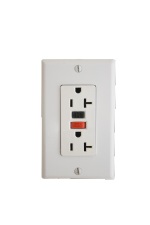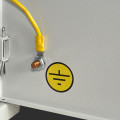Feeling a little frustrated as you try to research a problem with your home’s electrical system, only to be flooded with a torrent of foreign terminology? You are certainly not alone.
While there are tons of technical concepts and components that electricians use daily in their jobs, knowing a few basic definitions that go a long way towards helping you understand the lingo.
Common Basic Electrical Terms Homeowners Should Know
 Service Panel:
Service Panel:
You may know it as the “fuse box” or “breaker box.” The panel is the nerve center of your home’s electrical system. It’s where the “service,” which describes the components and wiring that bring electricity into your home from outside, connects to the circuits inside your house. Find out about panel upgrades here.
Main Disconnect:
Used as an emergency kill-switch for your entire electrical supply. It must be accessible from outside the residence and able to completely disable all the electrical currents in your home in a matter of seconds.
Voltage:
This term describes the effective force of your electrical current in volts. Devices and appliances are designed to use a certain number of volts to operate. This is in contrast to “amperes,” which are a unit of measurement that describes the rate of flow of electricity at a certain point in the system. Amps are calculated based on voltage and resistance, calculated in “ohms,” in the circuit.
 Receptacle:
Receptacle:
When an electrician discusses receptacles, they are talking about the outlets found throughout your home. These sets of holes allow you to connect appliances, chargers and other devices to the electrical current running through your walls. Receptacles often share a circuit with other outlets and light fixtures in a room. Circuits can become overloaded if there are too many things plugged in, temporarily disabling the associated receptacles.





